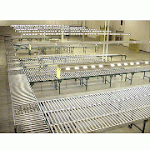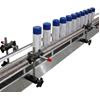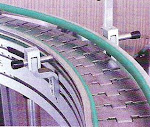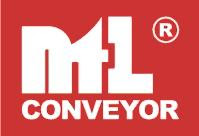Thứ Hai, 27 tháng 7, 2009
CÔNG TY TNHH TM NAM THÀNH LONG
CÔNG TY TNHH TM NAM THÀNH LONG
Địa chỉ: 13/1H Trung Đông-Thới Tam Thôn-Hóc Môn-TP.HCM
Tel: (84-8)62519677
Fax: 08.62519414
Hotline: 0982614088
Email: info@namthanhlong.com
Website: http://www.namthanhlong.com
Ngành nghề kinh doanh:
* Thiết kế, chế tạo băng chuyền băng tải:
-Băng tải PVC
-Băng tải cao su
-Băng tải xích INOX
-Băng tải xích nhựa
-Băng tải con lăn tự do
-Băng tải con lăn có truyền động
-Băng tải thực phẩm
-Băng tải hải sản
-Băng tải đứng
-Băng tải nghiêng
-Băng tải từ
-Gầu tải
-Vít tải
-Băng tải dăm gỗ
-Băng tải xi măng
*Gia công cơ khí: Tiện, phay, bào, hàn
*Chế tạo máy và chi tiết máy
*Kinh doanh: Máy móc, thiết bị công nghiệp, phụ kiện băng tải
*Sửa chữa bảo trì máy và thiết bị công nghiệp
*Tư vấn và cung cấp các giải pháp truyền tải sản phẩm đơn giản, kinh tế và hiệu quả
HƯỚNG DẪN THIẾT KẾ BĂNG TẢI
|
|
WHAT IS A CONVEOR? A conveyor moves material. A conveyor moves cardboard boxes, wood boxes, metal boxes and plastic boxes. A conveyor can move material
This is called a GRAVITY CONVEYOR. A conveyor can do more. It can move boxes UP against gravity . . . DOWN . . . or HORIZONTAL on a moving belt.
The belt is moved by electric power.
WHAT IS A BELT CONVEYOR? It is a machine with a moving BELT.
A BED
This is a conveyor bed.
A PULLEY
WHAT IS A BEARING?
HOW THE DRIVE PULLEY DOES THE WORK The drive pulley is turned (driven) by a motor. A sprocket is put on the drive pulley shaft.
A sprocket is put on the motor. WHAT IS A SPROCKET? A sprocket is a metal "wheel" with "teeth" on the outside.
HOW THE DRIVE PULLEY IS "DRIVEN" A chain is put around the Drive Pulley Sprocket and the motor sprocket.
The chain moves when the motor is started.
BUT ! . . . Because a motor turns very fast (1750 times per minute). . .
. . . The motor is connected to the reducer with a V-Belt (like the fan belt in your car) or a "C" Face Coupling. The reducer is connected to the drive pulley with a chain . . . Now the Drive Pulley turns slower. All those parts (the motor, the speed reducer, and the drive pulley) are called: THE
But what about the TAIL PULLEY?
The tail pulley is located at the tail end of the conveyor and it turns freely. Now a "belt" can be put around the pulleys.
The Drive Pulley turns and moves the belt around . . . and around . . . and around. BUT . . . . . . it is dangerous to have the belt hang down under the conveyor bed - So small rollers are put into the Conveyor Bed to hold up the belt.
These turn freely -- and just idle.
SOME TYPES OF BELTS STRETCH MORE THAN OTHERS What to do? 1. Move the tail pulley! It can be moved to "take-up" the belt stretch.
There are "take-up" screws on both sides of the conveyor.
2. What do you do when the take-up screws are still all the way out - and the belt still stretches? LONGER CONVEYORS ARE PROVIDED WITH ONE OR MORE SHORT PIECES OF BELT ADDED.
REMOVE THE SHORT PIECE(S) OF BELT. Now you can start the "take-up" procedure all over again. NOTE: If a "Dutchman" was not provided, you may need to add an UNDERSIDE TAKE-UP to your conveyor. HOW TO GET MORE BELT TAKE-UP There is more belt stretch on a long, long conveyor than the regular take-up and dutchman will give. So an "Underside Take-Up" should also be used.
WHEN TO USE UNDERSIDE TAKE-UP? ON CONVEYORS 60 NOTE: AN UNDERSIDE TAKE-UP is often used when the overall length of conveyor cannot be changed and the TAIL PULLEY "take-up" cannot be used. HOW CONVEYORS ARE MADE TO DO A BETTER JOB 1. BELT MOVES AT SPEED OF 65 FEET PER MINUTE (FPM) This is best speed to move objects from one place to another. A person can walk about 4 miles per hour. If they were carrying a box they would walk much slower. Conveyors move boxes at about the same speed as a person carrying them. This is about 65 feet per minute (or about 3/4 of a mile per hour). 2. DRIVE PULLEY IS CROWNED AND LAGGED.
3. THE
SO A DRIVE PULLEY "PULLS" THE BELT. NOTE: If the belt movement were reversed, the pulley would be pushing the belt. When the conveyor was fully loaded or when the belt stretched, the pulley could turn and not move the belt. 4. THE SNUB IDLER
The Snub Idler is closer to the drive pulley.
5. HOW TO "STEER" THE BELT
IMPORTANT: Move snub idler or return idler only 1/16 in. at a time. Then wait a few minutes to see if belt moves back to center. Only small adjustments are usually necessary. 6. POWER FEEDER (Used with incline Belt Conveyors) A. When boxes move from gravity conveyor to inclined belt conveyor, the box usually stops or "hangs up". The box will not transfer.
B. With a Power Feeder, transfer of the box is positive.
The Power Feeder is driven from main conveyor by a short chain connection. A. When belt movement is REVERSIBLE (on conveyors 40 ft. long or more) B. When overall length of conveyor cannot change (belt take up by tail pulley increases conveyor length)
CENTER DRIVE SHOULD BE USED Because: B. Take-up pulley can now be used to take-up belt. 8. ROLLER BED CONVEYORS When heavy total loads must be moved, it is best to use a conveyor bed with rollers (instead of regular conveyor bed).
This is a Roller Bed belt conveyor Heavy total loads can be moved without using large motors when a ROLLER BED belt conveyor is used. BELT CONVEYORS are often used with GRAVITY CONVEYORS. You should know about GRAVITY CONVEYORS TOO! WHAT IS A GRAVITY CONVEYOR? A gravity conveyor moves objects without motor power. To help objects move "easier" . . . and with as little slant or slope as possible -
ARE USED
WHEEL CONVEYORS
In the drawing above, the axles are on 3 in. centers (also available in 1-1/2 in. centers). The number of wheels on each axle can vary. This determines the number of wheels per foot on the conveyor. BUT . . There should always be a minimum of 10 wheels under a box.
This helps you decide the number of wheels per foot to order. ROLLER CONVEYORS
The rollers are put in the frame as close together -
or as far apart as necessary . . . BUT there should always be THREE (3) rollers under the box.
LESS THAN 3 ROLLERS . . . box tumbles
BEST-3 ROLLERS UNDER BOX AT ALL TIMES! This determines the ROLLER CENTERS to order. MOVE THESE ON WHEEL CONVEYORS (Any items with a smooth, flat bottom. These items can be wider than the conveyor, 6 in. over on each side is not too much. Extra wide items like plywood, can be moved O.K., but center it carefully.)
MOVE THESE ON ROLLER CONVEYORS Any Items with an uneven or open bottom, or with a rim on the bottom. These items should never be bigger around than the rollers are long.
HOW GRAVITY CONVEYORS ARE SET UP 1. ALL SECTIONS HAVE COUPLINGS
Sections can then be used together by coupling them to each other. 2. PORTABLE SET-UP USS TRIPOD STANDS
Always use one more stand than the number of conveyor sections (3 sections use 4 stands.) 3. PERMANENT SET-UP USES STATIONARY SUPPORTS
Always use one more support than the number of conveyor sections (3 sections use 4 supports.) POWERED AND GRAVITY CONVEYORS CAN BE USED TOGETHER!
This is called a "Flow System". |

















